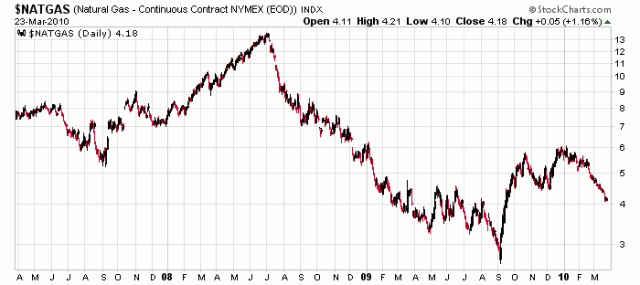I own (clarification: after today, this should be “owned”) some debentures of Bellatrix Exploration (formerly True North Energy Trust). They mature in June 2011, coupon of 7.5%. They also were a relatively safe pick to be redeemed at maturity.
Today the company announced they raised money for more debentures and announced their intention to redeem the existing debentures. The debentures have an early redemption term as follows:
Subject to closing of the Offering, Bellatrix intends to give notice on or following the closing date of the Offering of its intention to redeem its currently outstanding approximately $84.9 million 7.50% Convertible Unsecured Subordinated Debentures due June 30, 2011 (the “Existing Debentures”). The Existing Debentures are redeemable for an amount of $1,050 for each $1,000 principal amount of the Existing Debentures plus accrued unpaid interest if redeemed on or prior to June 30, 2010 or an amount of $1,025 for each $1,000 principal amount of the Existing Debentures plus accrued unpaid interest if redeemed after June 30, 2010. A determination as to the redemption date will be made prior to closing of the Offering. Proceeds from the Offering will be used by Bellatrix to partially fund the redemption of the Existing Debentures and the balance of the redemption amount is intended to be funded through bank indebtedness.
Earlier this year, Bellatrix debentures were trading very close to 102.5, which was my exit price. I was actually the asking price at one point in time, but nobody bought my asking price. I had assumed the company would wait until June 2010 to mature the debt and just left my open order at 102.5, assuming they would never consider an early redemption at 105.
I was apparently wrong – the debentures today traded from 102 to 104, settling around 103.5. The people buying above 102.5 obviously are speculating that management will be redeeming earlier than the June 30, 2010 date.
The math is pretty simple – the new convertible debenture deal closes on April 20, 2010. If the company redeems early, they will pay $2.125 million more in redemption premiums if they do it immediately after the deal closing than if they did so in June 30, 2010. If they wait the 2.3 months before redeeming, they are paying $1.22 million in interest payments, and this also does not include the company’s ability to utilize the $85 million in capital during that time period. Even if they redeem today, they will be paying $1.59M in interest expenses, much less than the $2.125 million they would save by delaying the redemption.
The calculation highly suggests the debentures will be redeemed on June 30, 2010, and anybody buying Bellatrix at 103.5 is insane. When the debentures are deemed, they will receive a -3.6% annualized return on their investment.
The trading lesson here, however, is that keeping open orders in this manner exposed myself to the risk of this happening and as a result, I am short a small amount, but an amount that certainly would have paid for quite a few ribeye steaks.
I also could have avoided this issue by actually waking up at 5:30am Pacific time and reading the press release to cancel my order, but Pacific coast investors automatically face the handicap of having the financial world set on the eastern time zone (even for an Alberta corporation) and I was obviously asleep at the time.
I am happy, however, that this trade was successful in the overall scheme of things.
